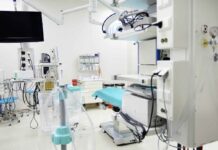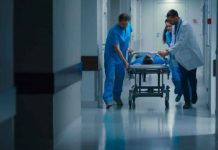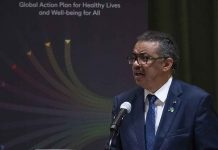When someone survives a stroke, they’re often at an increased risk for osteoporosis, falls, and broken bones due to decreased mobility. Already, the CDC shows that falls are one of the top causes of death from injury for those over 65 years old. But despite this knowledge, a new study published in the American Heart Association’s journal Stroke has found that many stroke survivors are not screened for these risks.
For this study, researchers looked at patients 65 years old and older from the Ontario Stroke Registry in Canada. These patients were all diagnosed with nonfatal ischemic stroke or intracerebral hemorrhage between 2003 and 2013. The registry data also showed patients’ outcome for bone mineral density testing (BMD).
The study sample included 16,581 patients but only 5.1% of those patients had testing for BMD. Of that 5.1%, 15.5% were given a prescription for osteoporosis medication within one year of their stroke. The data also showed that 2.9% of patients who received BMD testing did not have any prior screenings.
Furthermore, among patients who hadn’t received osteoporosis pharmacotherapy medication before, 3.2% of the overall group was prescribed medication, 7.8% of patients with fractures before the stroke were prescribed medication, and 14.8% of patients who experienced fractures after the stroke were prescribed medication.
Factors that were associated with prescription of osteoporosis medication after a stroke included female sex, prior BMD testing, prior osteoporosis diagnosis, and poststroke falls or fractures. And with one in three elderly adults sustaining injuries from a stairway fall every year falls and fractures are already a high concern among this age group.
The data found that the most common group of stroke survivors to receive BMD testing included younger females who had fractures in the year following their stroke. The researchers also note that the research was conducted in a province that offers payment for osteoporosis testing so results may vary in areas with different health care coverage options.
The lead author of the study, Dr. Moira Kapral, professor of medicine and director of the division of general internal medicine at the University of Toronto in Canada explained that this research is further evidence that medical professionals are missing an opportunity to identify stroke survivors with increased fracture risk.
According to the researchers, “We found that only a minority of people were screened or treated for osteoporosis after stroke… even in high-risk subgroups. Screening and treatment may be particularly low poststroke because of under-recognition of osteoporosis as a consequence of stroke, a selective focus on the management of cardiovascular risk and stroke recovery, or factors such as dysphagia precluding use of oral bisphosphonates.”







